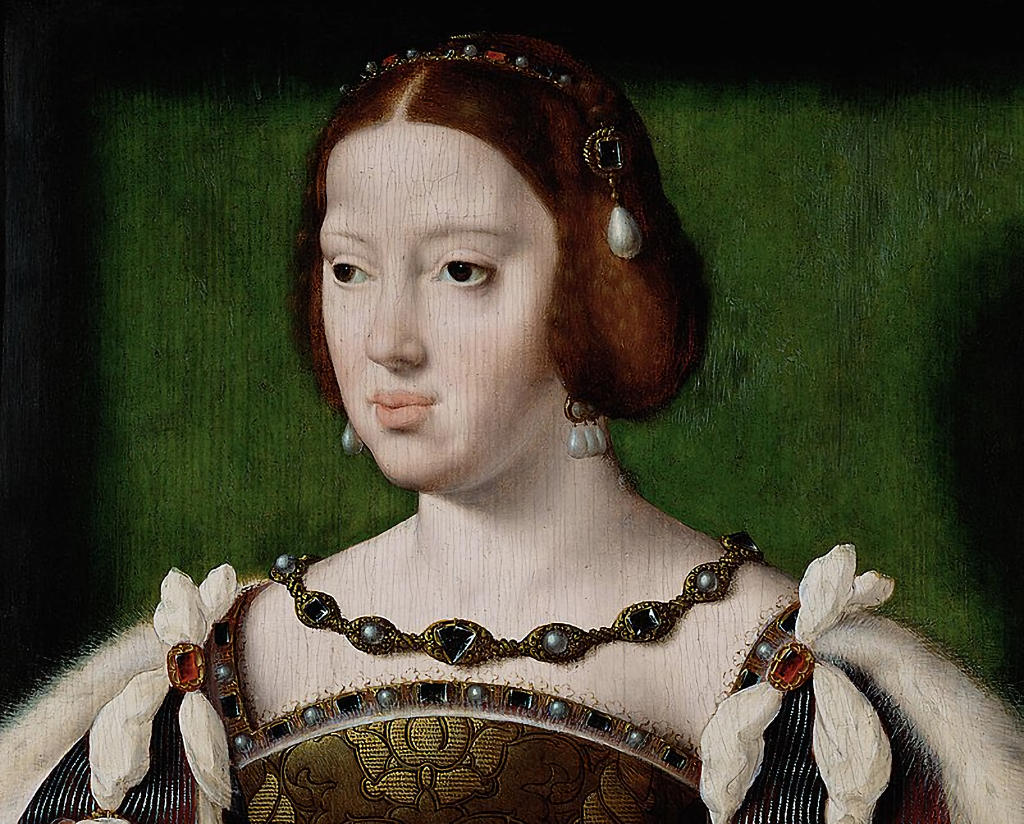In 1517, Eleanor's brother, Charles, who had become King of Spain, discovered a love letter from Frederick II, Elector Palatine, to Eleanor, suggesting a possible love affair between the two. Charles intervened and forced Eleanor and Frederick to deny any secret marriage. Following this incident, Eleanor accompanied her brother to Spain.
It was through strategic alliances that Eleanor eventually found her path to queenship. She married her uncle by marriage, King Manuel I of Portugal, in July 1518, after a proposed marriage with her cousin, the future King John III of Portugal, did not come to fruition. The marriage served to prevent Portuguese support for any potential rebellion in Castile. Eleanor and Manuel had two children together, Infante Charles and Infanta Maria. Unfortunately, Eleanor became a widow in December 1521 when Manuel succumbed to the plague. She returned to Spain as the Queen Dowager of Portugal, and her sister, Catherine, eventually married King John III of Portugal.
Lisbon.vip Recommends
During her time as Queen of France, Eleanor played a diplomatic role between France and Emperor Charles. She participated in peace negotiations and undertook missions to negotiate with her brother and sister, Mary of Hungary. In 1548, after the death of Francis, Eleanor retired to Brussels as a queen dowager. She witnessed the abdication of Charles in 1555 and spent her remaining years in Spain, residing with her sister in Jarandilla de la Vera. In 1558, Eleanor had a reunion with her daughter Maria, whom she had not seen for 28 years.
Eleanor of Austria, Queen of Portugal and later Queen of France, led a life that was shaped by political alliances, dynastic ambitions, and her roles as a consort. Despite the challenges she faced in her marriages, Eleanor left her mark through acts of charity, diplomatic engagements, and her enduring connection to the powerful Habsburg dynasty. Her story is one of strength, resilience, and the complexities of royal life in the Renaissance era.



